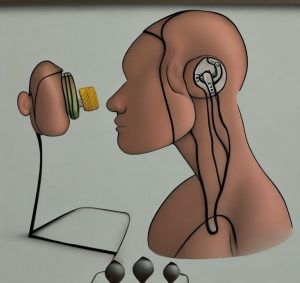Auditory Processing Disorder

Sound is an essential part of our everyday lives. We use it to communicate, learn, and navigate our environment. However, for some individuals, processing sounds can be a real challenge. Auditory Processing Disorder (APD), also known as sound processing disorder, is a neurological condition that affects the way the brain processes and interprets sounds. It’s estimated that around 5% of school-aged children have APD, and it can affect people of all ages. Here are some things you need to know.
What is APD?

APD is a neurological disorder that affects how the brain processes and interprets sound. This means that people with APD may struggle to understand and interpret sounds, particularly in complex or noisy environments. APD is often a result of a problem with the way the brain processes sound, rather than a problem with the ears themselves. In other words, people with APD can often hear sounds but have difficulty interpreting them.
Causes of APD

The causes of APD are not yet fully understood, but researchers believe that it may be caused by a combination of genetic and environmental factors. Some of the most common causes of APD include:
-
-
- Head injury or trauma
- Chronic ear infections
- Exposure to loud noises over a prolonged period of time.
- Neurological conditions such as autism or attention deficit hyperactivity disorder (ADHD)
-
Symptoms of APD

The symptoms of APD can vary depending on the individual and the severity of the condition. Some of the most common symptoms include:
-
-
- Difficulty understanding speech in noisy environments
- Struggling to distinguish between similar sounds
- Misunderstanding directions or instructions
- Difficulty with reading, spelling, and other language-based tasks
- Problems with memory and attention
-
People with APD can be sensitive to loud noises, but it’s important to note that sensitivity to loud sounds is not always a symptom of APD. Sensitivity to loud sounds, or hyperacusis, is a separate condition that can occur on its own or co-occur with APD.
In some cases, individuals with APD may find it challenging to process and interpret sounds in noisy environments, which can lead to feelings of overwhelm or stress. This can include loud sounds, but it can also include complex sounds or sounds with competing frequencies. In these cases, the issue is not necessarily the loudness of the sound, but the difficulty in processing and interpreting it.
On the other hand, individuals with hyperacusis may have a heightened sensitivity to loud sounds, which can be uncomfortable or even painful. Hyperacusis can be a result of damage to the ears, neurological conditions such as migraine or multiple sclerosis, or can occur without an apparent cause.
It’s possible for individuals with APD to experience difficulty processing bass frequencies, although this can vary from person to person. The specific frequency ranges that individuals with APD may struggle with can also differ.
Research on APD

There is still much to be understood about APD, but research has made significant strides in recent years. One study found that children with APD had significantly different brain activity compared to typically developing children when listening to sounds. This suggests that the problem with APD lies in the way the brain processes sound, rather than a problem with the ears themselves. Another study found that children with APD had reduced connectivity in brain regions responsible for processing sound, which may contribute to their difficulty interpreting sounds.
One challenge with diagnosing APD is that it often co-occurs with other developmental disorders, such as autism spectrum disorder, attention deficit hyperactivity disorder (ADHD), and dyslexia. However, a recent study found that children with APD had distinct patterns of brain connectivity compared to children with ADHD, suggesting that APD is a unique disorder with its own underlying neurological mechanisms.
Treatments for APD

There is currently no cure for APD, but there are several treatments that can help individuals manage their symptoms. One of the most common treatments is auditory training, which involves exercises designed to improve the brain’s ability to process and interpret sounds.
These exercises can be used to target specific areas of auditory processing that may be challenging for individuals with APD. There are many different types of auditory training exercises, but a couple of examples are:
Gap Detection
In this exercise, an individual listens to a series of sounds with a brief gap in between each sound. The goal is for the individual to identify the presence or absence of the gap.
For example, the individual may listen to a series of beeps, and some of the beeps may have a gap in between them, while others do not. The individual is instructed to press a button or raise their hand when they hear a gap in the sound.
This exercise can help improve an individual’s ability to detect brief changes in sound, which can be important for understanding speech and other complex sounds. The exercise can be made more challenging by reducing the length of the gap or increasing the complexity of the sound sequence.
Frequency Discrimination
In this exercise, the individual is presented with two sounds that differ in frequency, and they are asked to identify which sound is higher or lower in pitch.
For example, the individual may listen to two beeps that are close in frequency, but slightly different. The individual is instructed to identify which beep is higher or lower in pitch.
This exercise can help improve an individual’s ability to differentiate between sounds with similar frequencies, which can be important for understanding speech and other complex sounds.
Auditory training exercises can be customized to target specific areas of auditory processing that may be challenging for individuals with APD. These exercises are typically conducted by a trained professional, such as an audiologist or speech-language pathologist, and can be tailored to meet the needs and abilities of each individual. With regular practice, these exercises can help improve an individual’s ability to process and interpret sounds.
Other Treatment Options for APD
In addition to auditory training, there are a number of other treatment options available for individuals with APD. These include:
-
-
- Environmental modifications: Making changes to the environment, such as reducing background noise or using assistive listening devices, can help improve an individual’s ability to process and interpret sounds.
- Speech therapy: Speech therapy can be useful for improving an individual’s communication skills and helping them better understand speech.
- Medications: While there is no specific medication for APD, some individuals may benefit from medications that improve attention or reduce anxiety.
-
In Conclusion

APD is a complex and often misunderstood disorder that can have a significant impact on an individual’s quality of life. Research has made significant strides in recent years in understanding the underlying neurological mechanisms of APD, but there is still much to be learned. With appropriate treatment and accommodations, individuals with APD can learn to manage their symptoms and thrive in their everyday lives.


